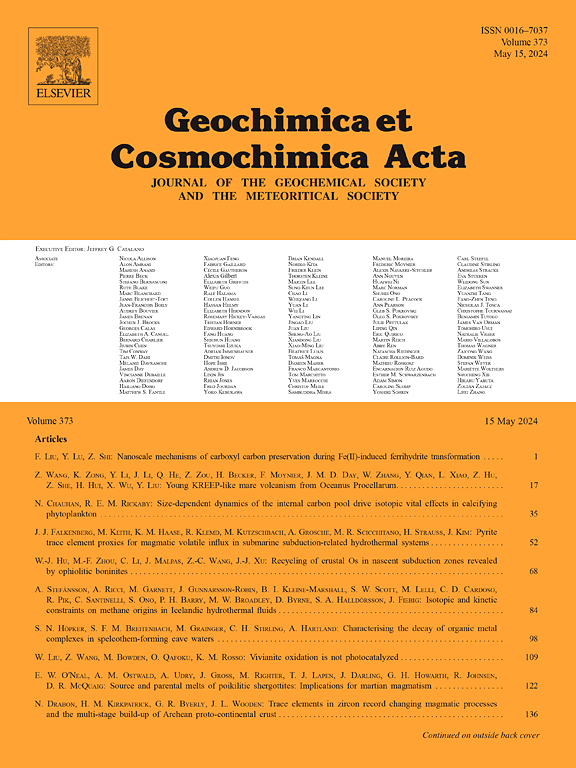Building Earth with pebbles made of chondritic components
IF 4.5
1区 地球科学
Q1 GEOCHEMISTRY & GEOPHYSICS
引用次数: 0
Abstract
Pebble accretion provides new insights into Earth’s building blocks and early protoplanetary disk conditions. Here, we show that mixtures of chondritic components: metal grains, chondrules, calcium-aluminum-rich inclusions (CAIs), and amoeboid olivine aggregates (AOAs) match Earth’s major element composition (Fe, Ni, Si, Mg, Ca, Al, O) within uncertainties, whereas no combination of chondrites and iron meteorites does. Our best fits also match the ε54Cr and ε50Ti values of Earth precisely, whereas the best fits for chondrites, or components with a high proportion of E chondrules, fails to match Earth. In contrast to some previous studies, our best-fitting component mixture is predominantly carbonaceous, rather than enstatite chondrules. It also includes 15 wt% of early-formed refractory inclusions (CAIs + AOAs), which is similar to that found in some C chondrites (CO, CV, CK), but notably higher than NC chondrites. High abundances of refractory materials is lacking in NC chondrites, because they formed after the majority of refractory grains were either drawn into the Sun or incorporated into terrestrial protoplanets via pebble accretion. We show that combinations of Stokes numbers of chondritic components build 0.35–0.7 Earth masses in 2 My in the Hill regime accretion, for a typical pebble column density of 1.2 kg/m2 at 1 au. However, a larger or smaller column density leads to super-Earth or moon-mass bodies, respectively. Our calculations also demonstrate that a few My of pebble accretion with these components yields a total protoplanet mass inside 1 au exceeding the combined masses of Earth, Moon, Venus, and Mercury. Accordingly, we conclude that pebble accretion is a viable mechanism to build Earth and its major element composition from primitive chondritic components within the solar nebula lifetime.
求助全文
约1分钟内获得全文
求助全文
来源期刊

Geochimica et Cosmochimica Acta
地学-地球化学与地球物理
CiteScore
9.60
自引率
14.00%
发文量
437
审稿时长
6 months
期刊介绍:
Geochimica et Cosmochimica Acta publishes research papers in a wide range of subjects in terrestrial geochemistry, meteoritics, and planetary geochemistry. The scope of the journal includes:
1). Physical chemistry of gases, aqueous solutions, glasses, and crystalline solids
2). Igneous and metamorphic petrology
3). Chemical processes in the atmosphere, hydrosphere, biosphere, and lithosphere of the Earth
4). Organic geochemistry
5). Isotope geochemistry
6). Meteoritics and meteorite impacts
7). Lunar science; and
8). Planetary geochemistry.
 求助内容:
求助内容: 应助结果提醒方式:
应助结果提醒方式:


